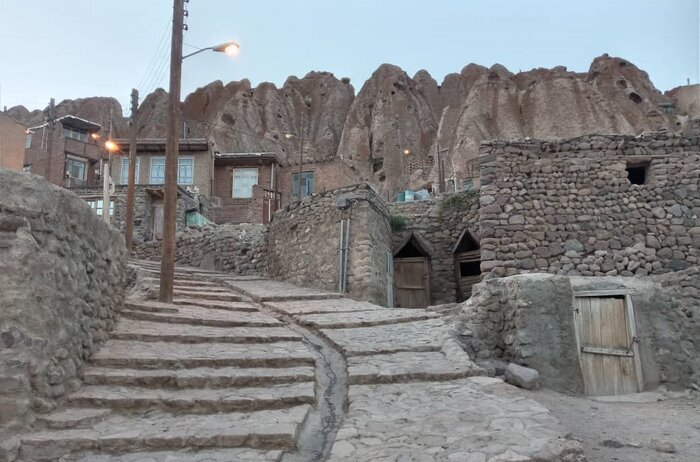Iran’s Cappadocia eyes World Heritage tag

TEHRAN – Iran is following up on a possible inscription of the rocky Kandovan village in East Azarbaijan province, which is sometimes referred to as Iran’s Cappadocia, a local tourism official has said.
As the village has recently been added to the UNESCO’s temporary list, its possible registration is being pursued more seriously, Mehdi Jodai said on Tuesday, IRNA reported.
Necessary steps are being taken in this regard such as the demarcation of the village with the aim of preventing illegal constructions as well as preserving and protecting the village, the official added.
Earlier in April, provincial tourism chief Ahmad Ahmadzadeh announced that the UNESCO registration of Kandovan village is one of the ultimate goals of the province's directorate.
Kandovan is one of the main destinations for foreign travelers to Iran, he said.
“Necessary measures should be taken to develop tourism infrastructure in Kandovan with the full cooperation of the public and private sectors because our ultimate goal is global registration of this historic village,” the official explained.
Situated near the city of Osku, Kandovan epitomizes genuine manmade dwellings that have been carved out of substantially eroded rocks and it has been continuously inhabited since ancient times.
As to its shape and appearance, Kandovan is highly reminiscent of Turkey’s Cappadocia, a UNESCO World Heritage site that features dwellings, troglodyte villages, and underground towns with traces of human habitat dating back to the 4th century.
Kandovan’s history dates back to 6000 years ago. Some researchers of archeology have estimated its age up to 7000 years old.
The village and its rocky houses enjoy a distinct architecture; the thickness of its walls reaches two meters in some places. The rock acts as energy-efficient material, keeping the house cool during summer and warm during winter. The heights of these rocks are about 40 meters.
Additionally, there are sharp pyramidal cliffs with holes on their irregular surfaces in this village which have been created due to volcano eruption in the region of the Sahand Mountain Range. The cliffs have shaped hive cells which are also known as Karan. Generally, most of these Karans are two-story in some cases, three and even four floors that they are not related to each other from the inside.
Furthermore, residents have carved every room of the cliff houses like kitchens, halls, and even pens out of stone to make windows for the rooms and later, to decorate them with colorful glasses.
ABU/MG

Leave a Comment